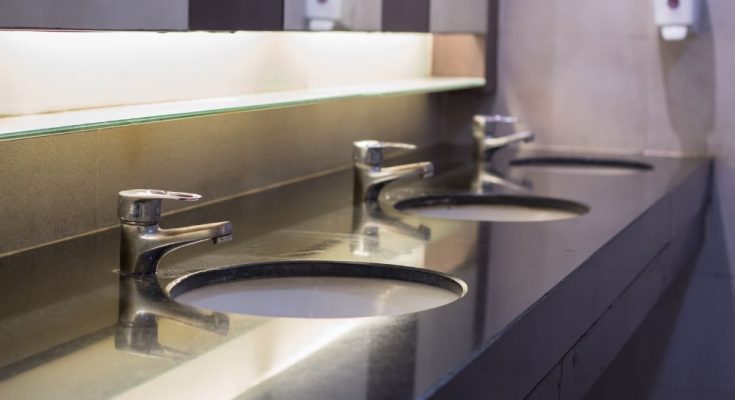Do you manage a business or building that has publicly used bathrooms? If so, you understand more than most the challenges of maintaining a fresh, hygienic, and welcoming environment for guests. Mainly, masking pesky smells is no simple task and demands some additional knowledge to manage things properly. Read on to learn more about the different sources of commercial restroom odors so you can provide employees and visitors with an ideal facility.
Grout
When a restroom smells musty, most people assume there is water damage somewhere in the walls causing mold growth. However, this is typically only true for basement and underground facilities, or those with outdated floor drains. For other lavatories, that mold is most likely thriving in the floor grout, along with mildew, bacteria, and other harmful toxins. Over time, these pollutants are absorbed into the porous material and become almost impossible to simply mop up. Instead, heavy chemicals and cleaning equipment are required to guarantee the most hygienic environment.
Sewage Leak
A ruptured pipe within your commercial restroom spells disaster, primarily in regard to the cost of repairs. These repair services demand professional plumbing contractors to ensure successful results. Another concern related to a broken pipe is the potential for a sewage leak. This smell is quite distinct, often compared to rotten eggs or fish, making this issue simple to identify. You must take immediate action upon discovering a sewage leak, as the spilled materials are known toxins that can severely harm other restroom guests. Plus, no one wants to use a bathroom that smells like the sewer. Alternatively, the smell of rotten eggs can indicate an issue with a toilet wax ring or related components.
Urine
The most common culprit for a foul-smelling restroom is urine that never made it into the toilet bowl. This problem is most prevalent in facilities found in public schools, public buildings, and other open venues. Although, this doesn’t mean commercial bathrooms are immune to the occasional urine issue. Your custodial staff must clean the lavatories regularly to avoid urine accumulation since this bodily fluid corrodes surrounding infrastructure andspreads harmful bacteria to other individuals. Additionally, maintaining a clean and organized environment encourages bathroom visitors to practice more hygienic behaviors, reducing the likelihood of urine ending up next to the toilet.
Despite the many different sources of commercial restroom odors, building managers and custodial staff take certain actions to ensure a more enjoyable experience for guests. These protocols range from regular maintenance and cleaning to installing complex odor-eliminating systems. In fact, controlling foul smells is one of the main benefits of automated air fresheners in heavily used public facilities. If you manage a commercial bathroom, it’s highlyrecommended you invest in some odor-prevention methods for the sake of yourself, fellow employees, and guests.



